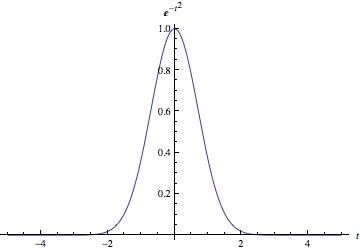|
Kolmogorov Equations
In probability theory, Kolmogorov equations characterize continuous-time Markov processes. In particular, they describe how the probability of a continuous-time Markov process in a certain state changes over time. There are four distinct equations: the Kolmogorov forward equation for continuous processes, now understood to be identical to the Fokker–Planck equation, the Kolmogorov forward equation for jump processes, and two Kolmogorov backward equations for processes with and without discontinuous jumps. Diffusion processes vs. jump processes Writing in 1931, Andrei Kolmogorov started from the theory of discrete time Markov processes, which are described by the Chapman–Kolmogorov equation, and sought to derive a theory of continuous time Markov processes by extending this equation. He found that there are two kinds of continuous time Markov processes, depending on the assumed behavior over small intervals of time: If you assume that "in a small time interval there is ... [...More Info...] [...Related Items...] OR: [Wikipedia] [Google] [Baidu] [Amazon] |
|
 |
Probability Theory
Probability theory or probability calculus is the branch of mathematics concerned with probability. Although there are several different probability interpretations, probability theory treats the concept in a rigorous mathematical manner by expressing it through a set of axioms of probability, axioms. Typically these axioms formalise probability in terms of a probability space, which assigns a measure (mathematics), measure taking values between 0 and 1, termed the probability measure, to a set of outcomes called the sample space. Any specified subset of the sample space is called an event (probability theory), event. Central subjects in probability theory include discrete and continuous random variables, probability distributions, and stochastic processes (which provide mathematical abstractions of determinism, non-deterministic or uncertain processes or measured Quantity, quantities that may either be single occurrences or evolve over time in a random fashion). Although it is no ... [...More Info...] [...Related Items...] OR: [Wikipedia] [Google] [Baidu] [Amazon] |
|
Master Equation
In physics, chemistry, and related fields, master equations are used to describe the time evolution of a system that can be modeled as being in a probabilistic combination of states at any given time, and the switching between states is determined by a transition rate matrix. The equations are a set of differential equations – over time – of the probabilities that the system occupies each of the different states. The name was proposed in 1940: Introduction A master equation is a phenomenological set of first-order differential equations describing the time evolution of (usually) the probability of a system to occupy each one of a discrete set of states with regard to a continuous time variable ''t''. The most familiar form of a master equation is a matrix form: \frac = \mathbf\vec, where \vec is a column vector, and \mathbf is the matrix of connections. The way connections among states are made determines the dimension of the problem; it is either *a d-dimension ... [...More Info...] [...Related Items...] OR: [Wikipedia] [Google] [Baidu] [Amazon] |